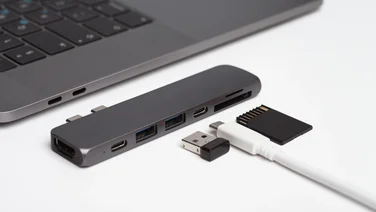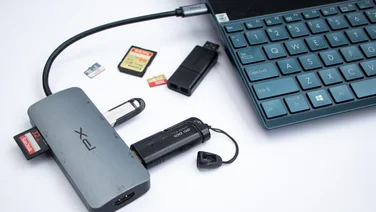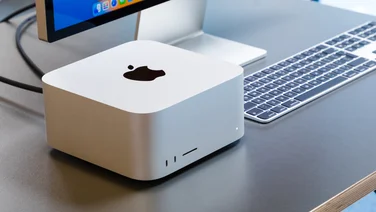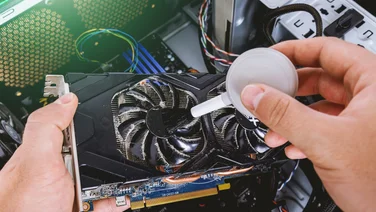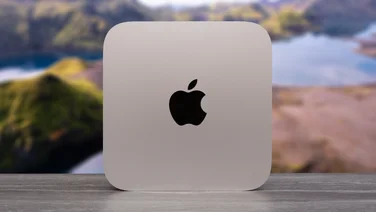To help us provide you with free impartial advice, we may earn a commission if you buy through links on our site. Learn more





George Osborne name-checked graphene during his 2014 budget speech, hailing the high-tech material as a great British discovery that should be commercially developed in Britain. The Government is committed to spending tens of millions of pounds on a new graphene innovation centre with the aim of developing novel graphene products. But what is graphene and why is the chancellor getting so excited about it?
What is graphene?
When first theorised in the 1940s, scientists thought that it was physically impossible for graphene to exist. The material is so thin that three million sheets of it stacked on top of each other would be only 1mm thick. It is made of a single layer of carbon atoms linked together like a honeycomb. Graphene is reckoned to be the strongest and most conductive material ever and it has got scientists and technology companies very excited.
Youve probably created graphene countless times without realising it. As the name suggests, graphene comes from graphite the same stuff on the end of a pencil. Graphene is simply a form of graphite that is one atom thick. Reliably creating a material that is essentially two-dimensional has proven tricky and baffled scientists for years until a man in Manchester spent a lot of time playing with some sticky tape.
How is graphene made?
In 2003, armed with a roll of Scotch tape, a block of graphite and a lot of patience, Andre Geim set about the task of creating a new super-material. Geim, director of the Centre for Mesoscience and Nanotechnology at the University of Manchester, was trying to make graphene by teasing off an atom thin layer from a block of graphite.

Having peeled off layers of graphite using the tape Geim repeated the process to get thinner and thinner flakes. He then dissolved the tape in solution leaving him with ultra-thin layers of graphite just 10 atoms thick. A few weeks later he and his team had created the first sheet of graphene. It was a genuine eureka moment and at the time Geim revelled in having successfully fooled nature.
In October 2004 his discovery was published in Science magazine and it quickly became one of the most cited papers on material physics. In 2010 Geim and his colleague Kostya Novoselov received a Nobel Prize in physics for their work.
The Nobel committee mused on the immense potential of graphene by hypothesising a graphene hammock. The hammock, measuring 1m square would weight 0.77mg. This lightweight hammock would be invisible as graphene is almost totally transparent and when hung between two trees it would be able to support 4kg. Thats about the weight of a cat. At just 0.77mg, the hammock itself weighs the same as one of the cats whiskers.

Where will graphene be used?
Graphene has amazing potential for technology. Computer chips rely on tiny transistors to control the flow of electricity around their circuits. The more powerful the chip, the more transistors it needs. With chips getting smaller and faster all the time we are approaching the limit of what current materials are capable of. Silicon, it would seem, has had its day. The fundamental limit of silicon based circuitry is 7 nanometres and that limit is fast approaching. As graphene is only one atom thick, it could herald amazing leaps forward in computing power.
Incredible progress has already been made with Samsung, IBM and Intel all investing heavily in graphene research. IBM has created a 100GHz transistor that is almost three times faster than the quickest comparable silicon device. Samsung, meanwhile, has been experimenting with flexible, unbreakable graphene touchscreens for phones and tablets.
Why cant graphene be used now?
A number of hurdles still have to be overcome before graphene leaves the lab and crops up in our computers. Graphene production is still prohibitively expensive and the process will need to become more reliable before it can be mass produced.

There is also a long list of technical issues. Transistors made of graphene, for example, cant be turned on and off. With no energy difference between graphene in its conductive and nonconductive states, it is necessary to create gates to turn it on and off. By comparison, silicon can be manipulated in this way, making it ideal for use in chips.
While graphene is showing huge potential further investment and research is needed. In Manchester the National Graphene Institute, a new 7,600 square metre facility costing £61m, is due to be completed early next year, with a similar £24m centre being setup in Cambridge.
George Osbornes decision to include graphene in his 2014 budget is a clear sign that the Government expects big things from the super-material. Less than ten years after it was revealed to the world, graphene could soon be big news once again.


